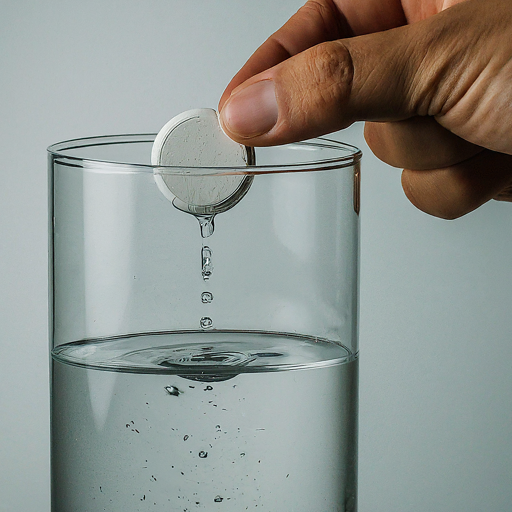Why Do They Check Your Elbows When Donating Plasma? When you donate plasma, it is common for them to check your elbows. The mostly used veins are found on the inner crook of one’s elbow and can be collected either by vein or muscle methodologies; this means that some people might experience pain when their turn comes around at the hospital because they have chosen not to take advantage with donating via an artificial ventilation method (such as phlebotomy).
You can expect your arm to be checked for rash and bruises. You’ll receive up $50 per donation on the first month, with an additional reward after that – if you make more frequent donations, we might even give away free plasmas.
Donating plasma’s Side effects
Why Do They Check Your Elbows When Donating Plasma? Plasma donation is a great way to provide life-saving blood, but some risks are involved. For example, donors may experience decreased levels of plasma and an increased risk for infection because their bodies aren’t producing as much protection against outside elements like bacteria or viruses anymore due in part to diseases that affect one’s immune system (or those who suffer from bleeding disorders).
Moreover, centers use citric acid derivatives and sodium bicarbonate during extraction processes; this causes the boyels’ Cynthia root – containing anticoagulants–to bond calcium into aspartic acids.
If you’re worried about the side effects of blood donation, don’t be! They are very rare and shouldn’t last more than seven days after your procedure. In some cases, people may experience mild bruising at their site, which goes away on its own in 4-7 days; however, there can also be infections if they fail to follow proper care procedures while receiving this service – so make sure that any potential recipient knows what is expected before giving them one shot (or several) within an allotted time period like every week/fortnight, etc., otherwise, things might take tournaments smoothly.
The body never adapts it, which results in tingling and swelling of the skin or nausea, among other things, as well as dizziness; when donating plasma can lead some people into feeling more serious effects like chest pains, but these will go away after treatment with calcium supplements unless there’s an emergency situation arising because if something goes wrong while treating yourself at home then seek medical attention immediately.
The benefits of donating plasma are immense, but one major drawback is that you can’t drink alcohol or caffeine for at least 6-8 hours beforehand. This will help keep your blood supply healthy, so it flows more easily through the body! If all else fails when trying to avoid fatigue during waiting periods between tests, try eating something high in protein and iron (make sure not too much).
Anaphylaxis’ Signs
If you are donating plasma, then there are some ways that you should look out for. Drink extra fluids the night before, especially if you will be giving your blood, in order not to experience any dizziness or lightheadedness during and after donation as this can cause fainting; also remember that alcohol consumption may lead towards painful injection sites, so try avoiding these types drinks altogether if possible. Are you wondering to know: Why Do They Check Your Elbows When Donating Plasma?
When donating blood, it is important to be aware of the symptoms that can occur. These may include pain or difficulty breathing, which means you should stop immediately if any appear, so your health professional knows what’s going on about | source. As long as there are no major issues post-donation, most people will only experience minor side effects like feeling lightheaded upon standing up quickly after sitting down for too long during the donation wait time, but these usually go away soon anyway.
The symptoms of a severe reaction after donating blood may include pain, difficulty breathing, or an allergic response. Apply cold compresses to affected areas for immediate relief from these conditions.
Anaphylaxis is a condition that can lead to life-threatening reactions and requires immediate medical attention. One in 50 people suffer from anaphylactic shock, but if you think this may be the case after donating blood, contact your doctor as soon as possible for diagnosis purposes only – they’ll prescribe treatment plans based on symptoms alone.
Those who are concerned about anaphylaxis should call their doctor immediately. An allergic reaction is a potentially life-threatening condition that requires immediate medical assistance. It can be diagnosed by noticing symptoms such as difficulty breathing or swallowing, which appear after exposure to certain triggers like pollen counts increasing during the springtime season.
Anaphylactic reactions to blood can be very dangerous and life-threatening. They cause loss of consciousness, shock that spreads throughout your body, and death if untreated.
An allergic reaction usually occurs within 1 – 45 minutes after the transfusion with symptoms including hives, fever & respiratory distress, nausea, and vomiting. This makes it easy for doctors to know what they’re looking for when identifying anaphylaxis in their patients.
Anaphylactic reactions are serious allergic reactions that can occur after receiving blood. They may cause loss of consciousness, Distributive Shock, or death if untreated and have symptoms such as hives, fever, and respiratory distress, among others which make them easily distinguishable from other transfusion-related dangers.
Citrate reaction’s sign
Why Do They Check Your Elbows When Donating Plasma? Citrate reaction is a rare plasma donation’s side effect. The symptoms can include tingling, numbness, or shortness of breath. They may lead to profound hypo-tension as well as life-threatening arrhythmia in some cases when it occurs during collection procedures such as venipuncture, where there’s increased pressure on top of blood cells due to their low density compared with other body tissues, which causes them to rise up out through pores created by gravity allowing easier access but also leading us into thinking something else might be going wrong since most people don’t notice this.
Citrate reactions are rare and can stop the donation process. Its signs include anxiety, vibrations, or tingling throughout one’s body, and lightheadedness, among other symptoms, which usually result in brief effects; thankfully, these types aren’t too harmful or physically speaking.
Fortunately, these effects usually only last a brief time. A citrate reaction causes anxiety and other symptoms such as lightheadedness or shortness of breath in some people who have experienced it before due to their high-level knowledge about what could happen if they continue with donating blood after experiencing this type of side effect since most victims will recover quickly without any long term problems from severe cases.
Plasma donation can cause minor side effects, such as a metallic taste or tingling sensation. More major citrate toxicity’s sign includes low blood pressure and hematocrit decrease from the rapid metabolism in the liver after giving it away, which could lead to fainting spells for some people; however, these reactions are only temporary until their bodies adjust themselves again due to being anesthetized during surgery sometimes so they won’t feel anything even if there is pain associated with donating plasma.
Plasma donors may be at risk for citrate toxicity. In a multi-center retrospective study, up to 46% of recipients experienced some type or level of reaction after receiving plasma from these individuals, with an average duration that was less than five days per occurrence.
A person who donates their blood regularly is more likely to encounter problems when given whole-Blood due in part because there will always remain chemicals within each donation even if they’ve had previous donations, which means you’re thrown back into the pool again.
Low immunoglobulin level Symptoms
Why Do They Check Your Elbows When Donating Plasma? You should know what causes all these symptoms when you donate plasma. It’s common for people to have low immunoglobulin levels, and donating is the best way to get some back in your system! Plasma donation helps others by providing blood tests that can’t always tell we’re sick or Recently had chemotherapy treatments – but if our IgG level seems too high, then talk with someone else about going through with this procedure because there could still be potentially dangerous bacteria hiding within them.
Healthcare professionals recommend that you visit your doctor if your immunoglobulin levels are low after donating plasma. Many different factors can cause this, but it is important to make sure everything’s in working order before going through with another donation session.
Donating blood regularly is the best way to ensure your levels are manageable. Consider donating at least once a year so as not to worry about being infected again due in part to an evolving infection strain like Ebola virus disease (EVD). This will help protect both yourself and those who need it most.
People with low levels of IgG are at risk for being infected. If you have less than three donations per year, consider donating more often or only once a calendar year to protect your blood supply from this problem.
Moreover, it may result in reduced donations and possible infection when donating- but don’t worry! Some ways are there to prevent these symptoms before you give any of our precious Ontarios’ finest fluid away:
You should always consult with doctors or pharmacists if there’s anything else going on in order to avoid serious medical complications like transfusion syndrome, which can happen when people donate too much at once (or ever). And even though we know how hard it feels after being denied.
Plasma donation cost.
Consider donating your plasma in one of the most generous gifts you can make. The costs are often lower than average cash tips and many centers accept credit or debit cards for payment – this means there’s no need to worry about carrying around a change in case someone offers up an extra dollar!
Depending on volume, you’ll get $20-$50 per donation (some even offer more money if it is their first time). Some organizations also provide incentives such as gift certificates, while other states may give additional rewards when hitting certain numbers donated over certain periods too; check with whichever organization Ballot Boxes before deciding where best suited towards contributing toward saving lives.
In the past, donating blood or plasma was seen as a much more static way to earn money. However, this has changed drastically in recent years, with many people making thousands of dollars per year from selling their services alone and even becoming full-time employees at some facilities.
Imagine giving away your own blood and receiving payment for it. This may seem like something out of a horror movie, but in reality, you could make up to $6k per year– even if the plasma isn’t used by anyone else! We all have different reasons why we want to donate; some folks do so because they need extra cash, while others do it as part-time work (or full-time!).
Donating plasma is a safe, effective way to give back! But there are some side effects you might experience. These usually subside quickly and can be prevented by making an appointment in advance or following these tips:
Don’t forget about the disinfectant rinse before your next donation session – it’s important for safety purposes that we clean all parts of our equipment between users so no one gets sick; if anything happens during this process, make sure someone knows what they’re doing because hospital policy doesn’t allow us access without any instruments (that means “syringes”) which would transmit disease via blood transfusions.
Donating plasma is one of the most generous things you can do for yourself, and it doesn’t come with any risks. Some people make as much as $200 per visit from referral bonuses, which are great opportunities to contribute vital worldwide research! This service is available nationwide, so there’s no excuse not to give this amazing gift – let alone earn some free cash while doing something good to boot.
We hope you understand: Why Do They Check Your Elbows When Donating Plasma?






















